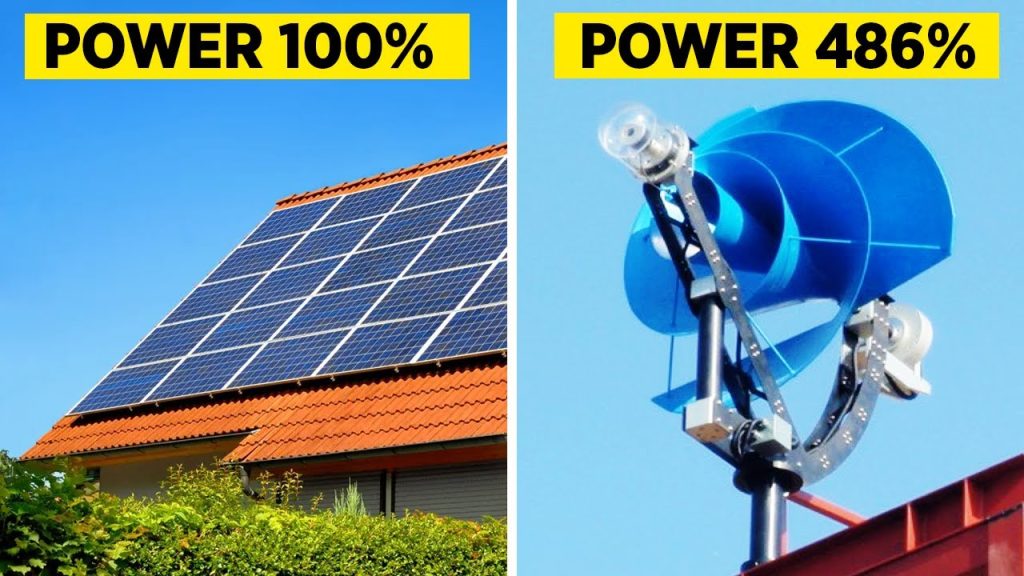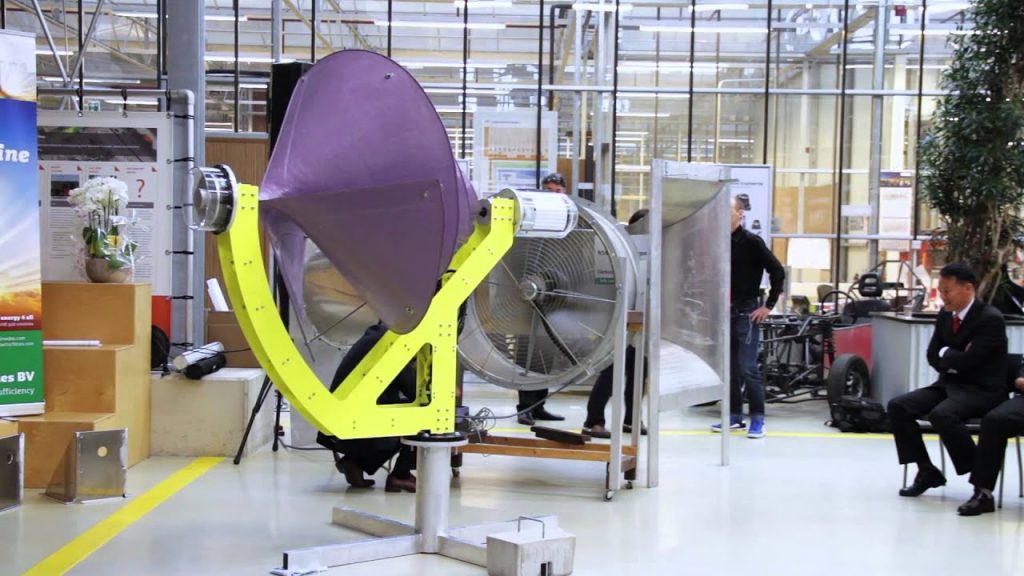Energy bills keep soaring, adding more stress to powering consumers’ houses. While conventional silicon PV solar panels remain popular, and many put them on their wish lists or already own them, new technological breakthroughs are underway that will end our reliance on buying energy for domestic use.
This article peeks at one of the promising innovations that may be near you sooner than later.
Solar energy has given us hope that cheaper and more affordable energy is on the horizon, but new alternatives may soon give it a run for its money.
Welcome to Archimedes, a little-known Dutch startup that has devised another device for harnessing clean, renewable energy from wind.
The latest wind turbine is called LIAM F1 UWT, a non-noisy home-integrated wind turbine with great promise.
This diverse and effective turbine design not only complements solar technology but also poses a significant threat to its monopoly in renewable energy generation.
The LIAM F1 UWT does not look or sound like a conventional wind turbine, which can be noisy and unattractive in large urban environments.
This turbine measures only 1.5 meters in diameter and weighs less than 100 kilograms, making it perfect for residential use where space is at a premium.
It has a spiral rotor layout, which means the turbine can harness power from the wind coming from any direction and thus can produce optimum power irrespective of fluctuating winds.
This technology is especially suitable for homeowners who may have avoided wind power technology due to noise factors.
The LIAM F1 UWT works at output levels not exceeding 45 dB, considerably lower than conventional turbines. Therefore, the noise does not affect the neighbours.
READ RELATED: Tanzania Embraces Renewable Energy Technologies for Sustainable Development
With the increase of urbanization, the LIAM F1 UWT may eventually be incorporated into rooftops and gardens as a standard for renewable energy.
While solar energy has its pluses, the LIAM F1 UWT offsets its negatives, which makes this technology very interesting.
Where solar energy is hampered by daylight and clouds, wind tends to defy these limitations, providing the certainty and assurance of the energy needed to power our homes.
Of telling significance, LIAM F1 UWT does not need strong winds to generate enough power to resolve our power blues.
The LIAM F1 UWT generates between 300 and 2,500 kWh per year and offers a household additional free electric power other than solar power.
However, the integration of the two systems can make the homeowner nearly energy-independent in some cases.
The LIAM F1’s low and irregular wind efficiency ensures that homeowners in areas with poor sunlight or who need additional reliable power can still benefit from wind energy, making this silent wind turbine a must-have.
In urban areas where reducing carbon footprints is a monumental undertaking, combining solar and wind technologies in each house may go a long way toward thwarting the surge in toxic carbon footprints.
If incorporated into urban development, small-scale and easy-to-implement technologies have the potential to reduce carbon emissions in cities significantly.
With an increasing focus on renewable energy, the LIAM F1 UWT is a small preview of a world where clean energy is available, practical, and sleek.
As the use of photovoltaic panels continues to surge, experts quickly point out that relying solely on the device may become more challenging, particularly during rainy and winter seasons, when efficiencies are extremely low.
Thus, innovations such as the LIAM F1 UWT allow homeowners to keep energy independence and avoid the adverse effects of solar reliance.
This silent wind turbine is a soothing reminder that the future of renewable energy is in diversification, innovation and flexibility.
The LIAM F1 UWT presents a different perspective on the worldwide popular notion of renewable energy sources.
This new wind turbine is expected to revolutionize home energy systems. It is virtually noiseless, friendly to the urban environment, and capable of capturing wind energy.
As the world focuses more on the future and tries to gear itself toward sustainability, adopting technologies such as the LIAM F1 UWT for energy independence may be a reality.
Archimedes, a Dutch-based tech firm, says its Liam F1 Urban Wind Turbine can do for your home what these towering structures have done for the electric grid. It can turn as much as 80 percent of harnessable wind energy into electricity, a conversion rate on par with the world’s top-performing systems.
Furthermore, it’s claimed to be much quieter, relatively compact, and more affordable than competing technologies.
The turbine is also designed to outperform conventional windmills by capturing wind coming in from multiple directions.
“With regular turbines, efficiency may sometimes drop depending on the angle of the wind,” says Marinus Mieremet, the company’s co-founder and chief technology officer.
“But the way ours is designed, it’s able to catch the wind head-on, whatever direction it blows, by automatically adjusting for the optimal wind position, sort of like a weather vane.”
Field tests, conducted in collaboration with Pusan University in South Korea, demonstrated that, given average wind speeds of 5 meters a second, the device could yield up to 1,500 kilowatt-hours a year, enough to supply about a third to half the electricity a typical home consumes.
In a year, one may have an average of 4 KW per day and need to supplement with other solar energy or add more wind turbines to meet ends.
This is not by any means a farewell to solar panels and their accompanying batteries to power our homes but a symbiotic association with noiseless wind turbines that can generate up to around 1,500 KWH for each turbine per annum, more than most homes need at any time for lighting.
This translates into meeting all your electric needs, from lighting our homes to warming or air-conditioning them. Keeping our refrigerators and freezers operating may require more careful consideration.
That includes washers, dryers, and dishwashers, without forgetting a water pump sunk in a well to supply us with water when authorities fail to meet our needs.
All these are achieved without coughing up even a cent to TANESCO, which means no taxes to EWURA, REA, or TREASURY through VAT.
My concern is that once such a technology is widely used, our Taxman will dream up other inefficient ways to plug the tax hole cratered by such innovations. Do you remember when satellite dishes and TV sets were introduced?
Didn’t a Taxman craft a registration law to milk us white, but enforcement costs rendered the whole effort redundant?
I see that those who will own this technology initially will not be taxed, but future owners will require registration for taxation purposes, just like owning a well.
Sinking a well these days needs registration and paying up for doing what water authorities cannot do profitably.
Studies have indicated that a similar clean energy investment may take 28 years to recoup the initial capital cost, but this one may halve that period, making it even more attractive.
The equipment costs $5,450 before incorporating transport, storage, and local taxes, which is still beyond the majority’s access.
Still, knowing that option is available in the market should flash a smile in many faces frazzled with whatever erratic power supply we can scrounge to power our homes.
Whether we are aware of it or not, the future of home energy is not in archaic and centralised systems but in decentralized ones, where history has taught us very well that the promised economies of scale are nowhere to be enjoyed, given that official graft, poor planning, administrative overblown expenses, and overtaxation have conspired to declare hell on our collective lot.
While decentralised energy solutions are growing rapidly, institutional inertia still prevents us from adopting them.
If you look at REA and TANESCO’s corporate plans, they are still entrapped in woeful centralization energy solutions.
Such bondage with the “bigger the better” has left us heavily indebted, whacked with poor services offered at extortionate pricing with official graft and sheer incompetence inflicting us with some serious damage.
It is a retrogressive mental orientation that serves nobody except those who engineer those painful plans. Changing our attitudes and reallocating our resources to household solutions will go a long way to thwart our energy blues at the home level.



Good Morning
Excellent product.
I was born in Antwerp, Belgium.
I would like to be a salesperson for this product and relocate to Europe.
Thank you for your time and consideration.
Randall fox
1-253-375-5668
Good day